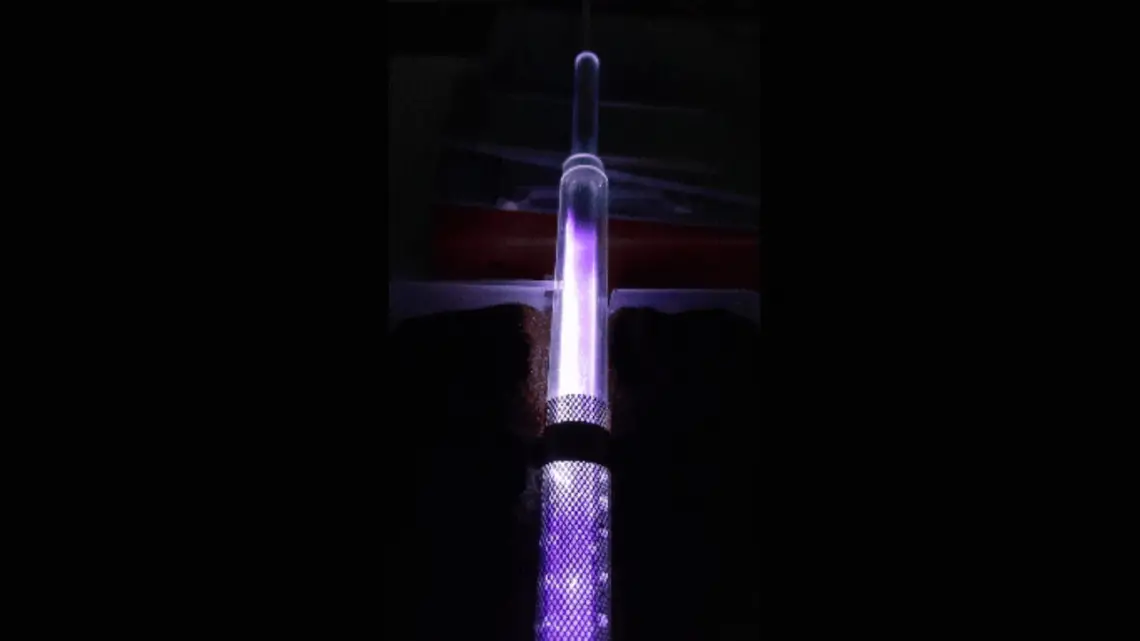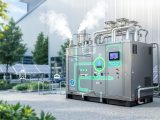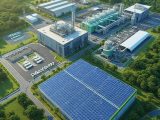
Plasma-Driven Ammonia Production: University of Sydney’s Game-Changer in Clean Ammonia
July 7, 2025Australian scientists might’ve just redefined how we make ammonia—using nothing but air, electricity, and a spark of plasma. A team at the University of Sydney, led by Professor PJ Cullen, shared a breakthrough that could seriously shake things up in the world of ammonia production. Instead of sticking with the old-school, fossil-fuel-hungry Haber-Bosch process, this team turned to plasma—basically, controlled lightning—to pull nitrogen straight from the air and turn it into clean, usable ammonia. And they’ve managed to do it without CO₂ emissions and without the need for massive, centralized factories.
The Big Takeaways
- This is a plasma-based ammonia synthesis approach—essentially, they zap air with electricity and get clean ammonia gas in return.
- Membrane-based electrolyzers finish the job using minimal energy, skipping both fossil hydrogen and energy-intensive steps like liquefaction.
- The tech could power up small to mid-sized farms with clean fertilizer and has major potential as a greener way to support hydrogen storage.
Plasma Lightning, But Make It Useful
Here’s how it works: the process mimics what happens in nature during a lightning storm. Lightning excites nitrogen and oxygen molecules in the atmosphere, and Cullen’s team recreated that in a lab using a plasma reactor. The electrified air is then passed through a special membrane-based electrolyzer, which kicks off the reaction that creates ammonia gas—NH₃—all without needing extreme heat or pressure. And it all happens at room temperature. Pretty wild, right?
Compare that to the old Haber-Bosch process, which gobbles up around 2% of the world’s energy and pumps out 1–2% of global greenhouse emissions, mainly because it’s tied to natural gas. The contrast couldn’t be clearer.
Why This Matters: Clean Ammonia and Green Hydrogen
- Go Local: This opens the door for farms or rural areas to make their own ammonia on-site. That means less energy spent on transportation and fewer logistics headaches.
- Modular Magic: Unlike traditional plants that need to be massive to make sense, this system is modular. You can scale it without worrying about traditional cost barriers.
- Plug It into Renewables: Got a wind or solar farm? This setup can use excess energy to create a storable fuel—making it a smart way to smooth out energy supply and demand.
A Modern Fix for a Century-Old Industrial Giant
Let’s take a step back. Ever since the early 1900s, the Haber-Bosch process has been the go-to for making ammonia fertilizers—helping to feed billions but at a serious environmental cost. It requires big plants, high pressure, and lots of fossil fuels, meaning it’s only profitable in certain parts of the world. Now, with big climate goals on everyone’s radar, this century-old process is under pressure to clean up its act.
This new tech flips the playbook—offering a way to make clean ammonia that’s nimble, decentralized, and way more eco-friendly.
Why This Could Be a Game Changer
- Fertilizers with a Lower Footprint: Huge for countries without local chemical plants or with food insecurity challenges.
- A Fuel for the High Seas: As ammonia catches on as a fuel for ocean-going ships, this method delivers a low-carbon source to back that trend.
- Hydrogen on the Move: Ammonia is a clever way to store and ship hydrogen—so this tech could help fast-track hydrogen storage solutions too.
Still Some Work to Do
This isn’t ready to roll out everywhere just yet. Right now, the priority is making it even more energy-efficient so it can compete head-on with traditional ammonia factories on both cost and output. The researchers are especially focused on dialing in the performance of the membrane electrolyzer, which is a key piece in the setup.
Looking Ahead
What makes this so exciting isn’t just the cool science behind it—it’s the doors this could open. The University of Sydney’s achievement feels like a real turning point, not just for clean ammonia but for broader industrial decarbonization. The bottom line? There’s no single silver bullet in the race to go green, but this tech is definitely one of the sharpest tools in the box.
Source university of sydney



 With over 15 years of reporting hydrogen news, we are your premier source for the latest updates and insights in hydrogen and renewable energy.
With over 15 years of reporting hydrogen news, we are your premier source for the latest updates and insights in hydrogen and renewable energy.